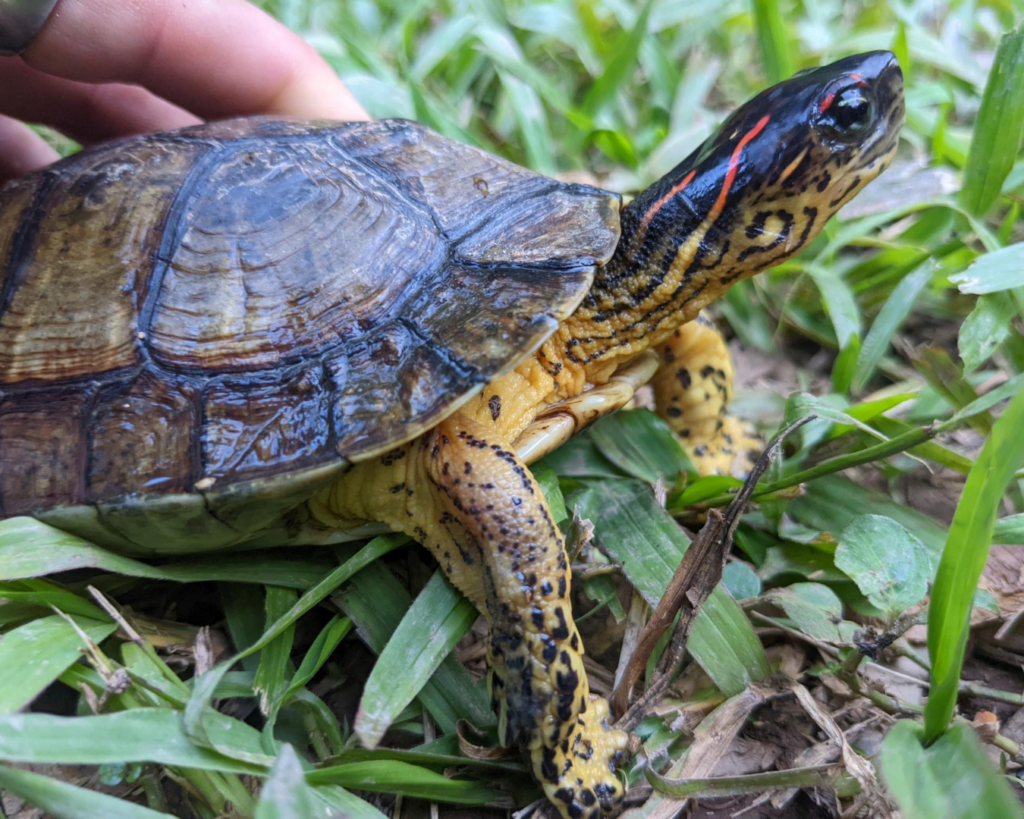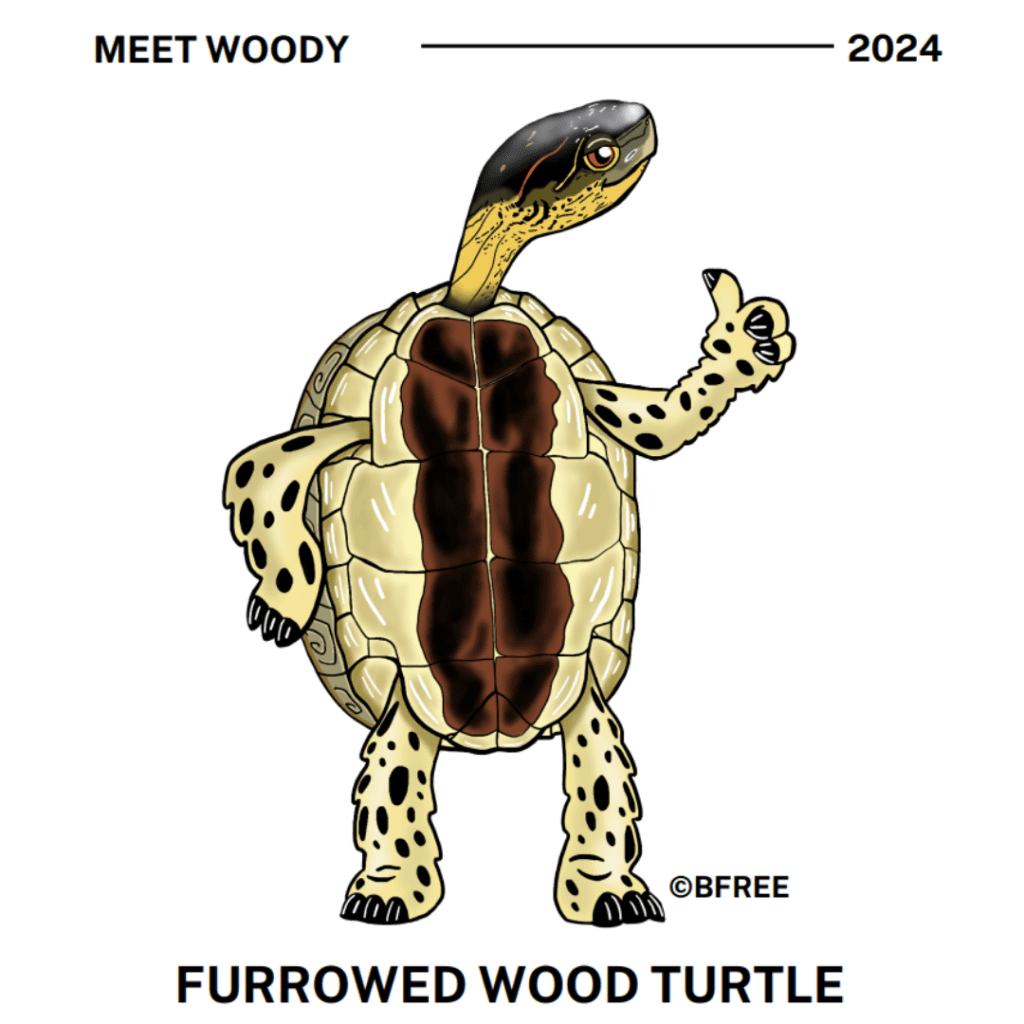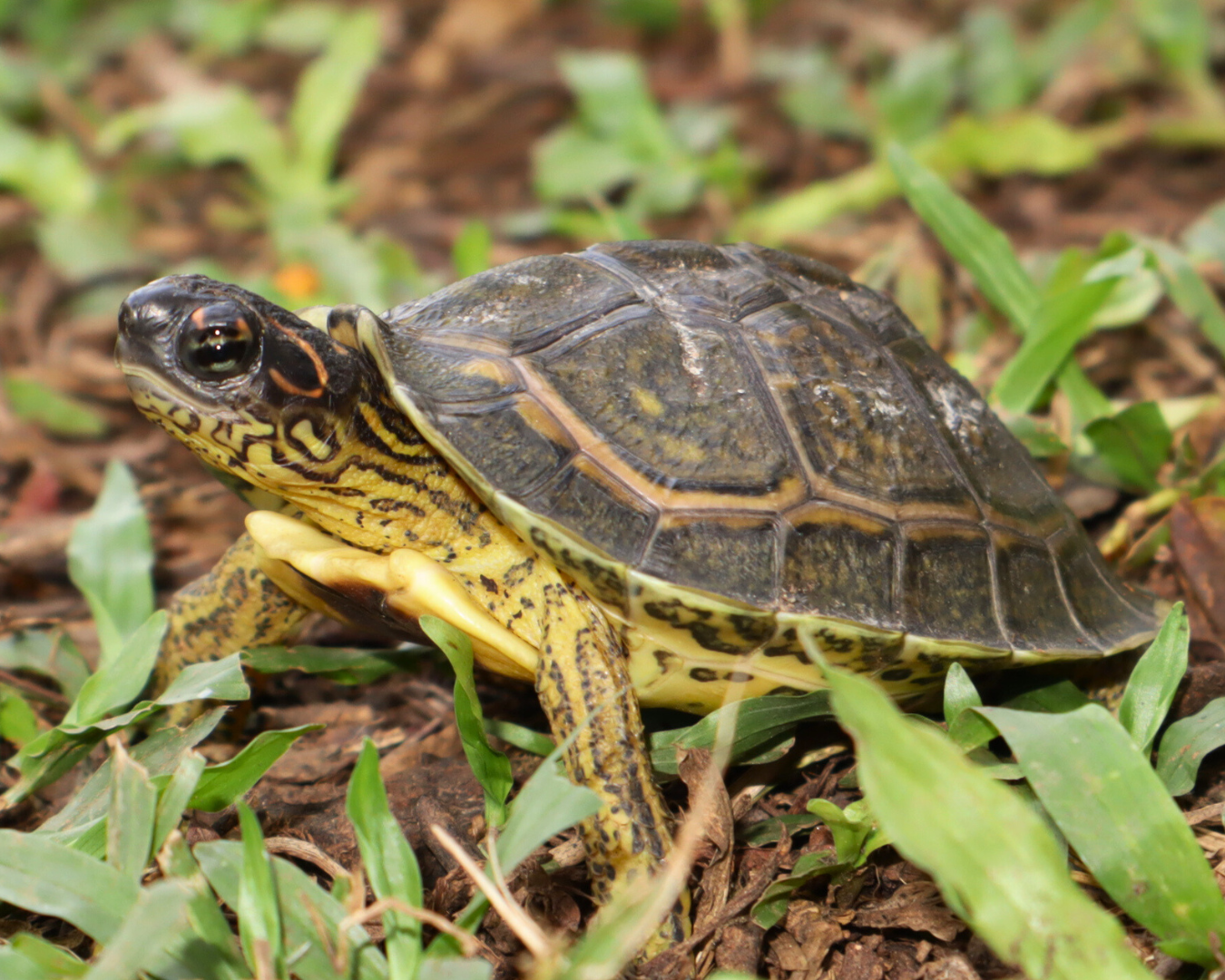Meet the next Belizean turtle we’re spotlighting for Hicatee Awareness Month – the Furrowed Wood Turtle!
This turtle is found mostly on land and occasionally in water, spending its time in forest edges and savanna areas, and in and around the edges of wetlands or marshes. It is one of the smaller species of neotropical wood turtles. Like other Belizean turtles, it has been threatened by habitat destruction, collection for the pet and food trade, and road mortality. We work with the Belize Foundation for Research and Environmental Education (BFREE) to monitor the populations of this species and engage and inform the local community.
We also work with this species in the southernmost state of Mexico, Chiapas, through a collaboration with graduate student Eduardo Reyes-Grajales, and in the Yucatán Peninsula, with our partner Students Conserving Nature, to perform field surveys and community outreach and engagement.

This turtle, found in southern Mexico and northern Central America, faces threats from habitat destruction, pollution, and overcollection for consumption. Through our work with BFREE, we aim to spread education initiatives with the local communities and perform field surveys to monitor the population of this species on Belize’s 1,153-acre biological field station and reserve in the foothills of the Maya Mountains.
We also work with this species in the southernmost state of Mexico, Chiapas, through a collaboration with graduate student Eduardo Reyas-Grajales, to perform field surveys and community outreach and engagement.
Follow along throughout October to learn more about the turtles in Belize that need our help, and learn more about these turtles in the educational materials and webinars hosted by BFREE here!

- Pictured: Furrowed Wood Turtle
- Countries of Origin: Belize, Guatemala, Mexico
- Habitat: Tropical savannas, forests, forest edges, scrubland, and temporary wetlands
- Wild Population: Unknown; can be locally abundant in preferred habitat
- IUCN Red List Status: Near Threatened
- Threats: Habitat destruction, alteration, and degradation; collection for the pet, food, and curio trades and local consumption, and road mortality
Header image by Parker Gibbons.
